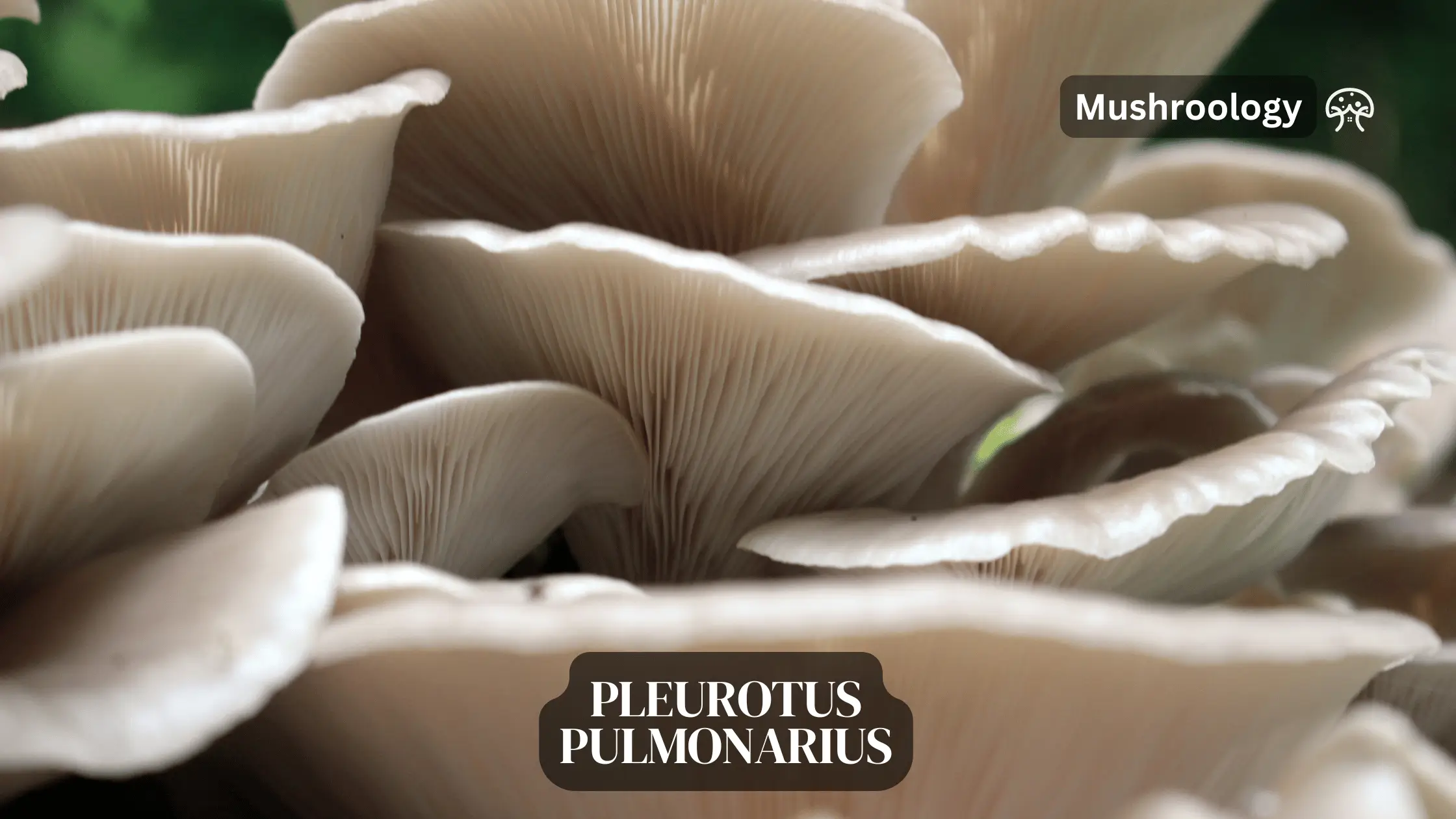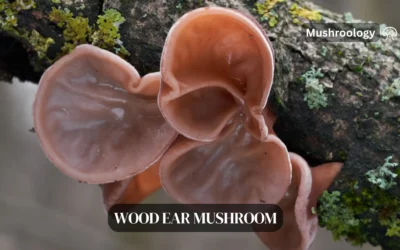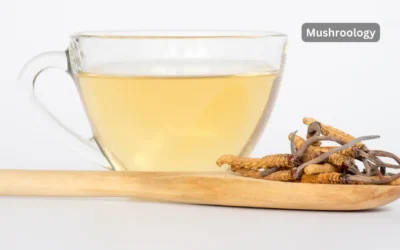If you’re interested in growing mushrooms, the Phoenix Tail Mushroom, scientifically known as Pleurotus pulmonarius, is a great choice. It’s one of the most versatile and easy-to-grow mushrooms, known for its delicious taste and impressive health benefits. As a member of the Pleurotus genus, it’s closely related to the well-known Oyster mushroom (Pleurotus ostreatus), but has a slightly different flavor and adapts better to warmer climates.
Growing Phoenix Tail Mushrooms is gaining popularity due to their rapid growth, resilience, and rich nutritional content, making them profitable for both commercial growers and small-scale enthusiasts. This guide will walk you through everything you need to know about cultivating Pleurotus pulmonarius, from understanding its biology to best practices for achieving the highest yield and quality.
Understanding the Biology and Ecology of Pleurotus pulmonarius
Phoenix Tail Mushrooms, also called Indian Oyster mushrooms, belong to the Pleurotaceae family. These mushrooms are easy to recognize thanks to their broad, fan-shaped caps that range from light beige to cream in color, along with a central or slightly off-center stem. Like other Pleurotus species, P. pulmonarius feeds on dead and decaying organic matter, acting as an efficient decomposer in nature.
Phoenix Tail Mushrooms grow well on a wide range of substrates, from hardwood logs to agricultural by-products like straw, sugarcane bagasse, and coffee pulp. Unlike some other oyster varieties, they adapt particularly well to warmer climates, with optimal growth temperatures between 25°C and 30°C. This makes them an excellent choice if you live in a warmer area. Their role as decomposers also makes them great for nutrient recycling, which means they aren’t just tasty and healthy—they’re also good for the environment.
How to Cultivate Phoenix Tail Mushrooms (Pleurotus pulmonarius)
If you want to grow Phoenix Tail Mushrooms, you’ll need to follow a few essential steps to ensure your mushrooms grow well. The process can be broken down into four phases: substrate preparation, inoculation, incubation, and fruiting.
How to Do the Substrate Preparation for Growing Pleurotus pulmonarius
One of the great things about Pleurotus pulmonarius is its versatility—it grows on a variety of substrates. Some popular choices include wheat straw, rice straw, and hardwood sawdust. The key to success is to make sure the substrate is pasteurized or sterilized to remove any competing microorganisms. Usually, pasteurization involves heating the substrate to around 60-70°C for several hours. This helps get rid of contaminants while preserving beneficial microbes that can aid mushroom growth.
After you’ve pasteurized the substrate, drain it and let it cool to room temperature. The moisture content should be around 60-70%, which is ideal for mycelium to grow. Once ready, pack the substrate into bags or containers that will serve as the growing medium.
How to Inoculate and Incubate Phoenix Tail Mushrooms
The next step is inoculation, where you add the Pleurotus pulmonarius spawn to your prepared substrate. You can do this by mixing the grain spawn thoroughly through the substrate. Make sure to use sterile techniques to keep out contaminants—this will really help boost your chances of success.
After inoculating, you’ll need to incubate the substrate in a warm, dark space at temperatures between 25°C and 28°C. During incubation, which takes about 2-3 weeks, the mycelium will fully colonize the substrate, turning it a solid white color. Keep the humidity high, ideally around 80-90%, to help the mycelium grow properly.
How to Set Up the Fruiting Conditions for Pleurotus pulmonarius
Once the substrate is fully colonized, it’s time to encourage the mushrooms to start fruiting. To do this, change the environmental conditions by increasing the light and lowering the temperature to around 20-25°C. Phoenix Tail Mushrooms need some indirect light—about 12 hours per day is enough to help form high-quality fruiting bodies.
You’ll also need to maintain a high humidity level of 85-95%. You can do this with regular misting or a humidifier. It’s also important to make sure there’s enough fresh air during this stage. Too much carbon dioxide can lead to long stems and smaller caps, which can reduce the quality of your crop.
How to Harvest Phoenix Tail Mushrooms
Phoenix Tail Mushrooms are usually ready to harvest within 4-7 days after they start fruiting. It’s best to pick them when the caps are fully expanded but haven’t started to turn upwards. This will give you the best flavor and texture. To harvest, simply twist the mushroom at the base to remove it cleanly, which also helps promote additional flushes. With the right care, you can get multiple flushes from a single batch, which means more mushrooms for you to enjoy.
Common Challenges in Cultivating Pleurotus pulmonarius
Although Phoenix Tail Mushrooms are quite resilient and generally easy to grow, you may run into a few challenges. Contamination by other fungi or bacteria is a common issue. If you don’t sterilize properly or use clean techniques, competing organisms can take over. Ensuring a sterile substrate and clean work environment can significantly reduce these risks.
Another challenge is managing environmental conditions—temperature, humidity, and light need to be kept in balance. Fluctuations can negatively affect your yield or the quality of the mushrooms. Pests like mites and flies can also become an issue during fruiting, so keeping a close eye and using organic pest control if needed is key.
Nutritional and Health Benefits of Phoenix Tail Mushrooms
Studies have shown that Pleurotus pulmonarius is a rich source of bioactive compounds with significant health benefits. Research by Patel et al. (2012) demonstrates that the polysaccharides present in P. pulmonarius exhibit potent antioxidant and immune-boosting activities. Additionally, a study by Gunde-Cimerman (1999) highlights the cholesterol-lowering effects of lovastatin, a compound found in this mushroom, making it beneficial for cardiovascular health. The presence of ergothioneine, a powerful antioxidant, has also been supported by research (Cheung, 2010) which suggests it contributes to the reduction of oxidative stress, potentially lowering the risk of chronic diseases.
Phoenix Tail Mushrooms aren’t just easy to grow—they’re also packed with nutrients. They’re rich in protein, B vitamins, and minerals like potassium, phosphorus, and iron, all while being low in calories and fat. This makes them a healthy addition to your meals.
These mushrooms also contain several bioactive compounds, including polysaccharides, ergothioneine, and lovastatin, which have been linked to health benefits. For example, the polysaccharides in Pleurotus pulmonarius have antioxidant and immune-boosting properties, while lovastatin is known to help lower cholesterol, which supports heart health.
Medicinal Properties of Pleurotus pulmonarius
Research has shown that Pleurotus pulmonarius has significant medicinal potential. According to Wasser (2010), the antioxidant properties of this mushroom help neutralize free radicals, which may reduce the risk of chronic diseases such as cancer and neurodegenerative disorders. A study by Bobek et al. (1995) also found that P. pulmonarius contains beta-glucans that stimulate immune response, which is crucial for fighting infections and maintaining overall health. Furthermore, these mushrooms possess antimicrobial properties that have been demonstrated to be effective against several bacterial strains, as noted by Adebayo-Tayo and Jonathan (2008).
In addition to the antioxidants, Pleurotus pulmonarius contains significant amounts of dietary fiber, which has been linked to improved digestive health by promoting bowel regularity and fostering a healthy gut microbiome (Manzi et al., 2001). Including this mushroom in your diet can provide a wide range of health benefits, supported by scientific research, making it an excellent functional food.
The health benefits of Phoenix Tail Mushrooms go beyond basic nutrition. They contain antioxidants that help fight off free radicals, which could reduce the risk of chronic diseases like cancer and neurodegenerative conditions. They also have antimicrobial properties, which means they might help fight off certain bacteria.
The dietary fiber in these mushrooms is great for digestive health, helping to keep things moving and maintaining a healthy gut microbiome. These combined nutritional and medicinal properties make Phoenix Tail Mushrooms a valuable addition to your diet.
Economic and Commercial Considerations for Growing Phoenix Tail Mushrooms
When it comes to growing Phoenix Tail Mushrooms, you’ll find that they can be a profitable choice due to their fast growth and adaptability. For instance, if you have access to agricultural by-products like wheat straw or rice husks, you can use these as inexpensive substrates, which significantly reduces the cost of production.
For small-scale growers, a great tip is to use readily available resources in your local environment. For example, if you live near farms, you might be able to get straw or sawdust at little to no cost. This makes Pleurotus pulmonarius an excellent option for generating additional income without substantial upfront investment.
On a commercial scale, it’s advisable to plan for consistent market demand. Restaurants, organic food stores, and farmers’ markets are good places to start. Another tip is to process some of your harvest into dried mushrooms, which can be sold at a premium and stored for longer periods. The flexibility of selling fresh or dried mushrooms helps you reach different types of consumers, ensuring that none of your products go to waste.
If you’re a small-scale farmer, consider integrating mushroom cultivation with agroforestry. By using tree prunings or other by-products from agroforestry, you create a circular system where resources are continuously reused. This kind of integration boosts sustainability, making your farm more resilient while providing multiple streams of income.
For sustainability, think about the environmental benefits. Using agricultural waste as a growing substrate turns potential waste into valuable food, which helps minimize your environmental footprint. Additionally, improving your substrate mix by adding supplements like bran or gypsum can help boost yields and improve mushroom quality.
Phoenix Tail Mushrooms are economically viable due to their fast growth, ability to grow on many substrates, and high yields. These traits make them an ideal crop for both small-scale growers and commercial cultivators, especially in warmer regions. The low cost of substrates, which can include agricultural by-products, adds to their profitability.
The demand for organic and functional foods is on the rise, and Phoenix Tail Mushrooms fit the bill perfectly. They’re popular in a variety of dishes, from stir-fries to soups, because of their delicate flavor and tender texture. Plus, their health benefits make them attractive in the health food market. They can be sold fresh or dried, which opens up a lot of opportunities to reach different markets.
If you’re a small-scale farmer, growing Phoenix Tail Mushrooms can be a great way to use agricultural by-products, helping reduce waste while adding an additional income stream. On a larger scale, integrating mushroom cultivation with other farming practices like agroforestry can boost the sustainability of your farm and provide multiple revenue sources.
Growing Phoenix Tail Mushrooms is also an environmentally friendly practice. They can grow on a variety of agricultural wastes, turning by-products into valuable food. This not only helps reduce waste but also promotes better resource efficiency, which is great for sustainability.
Future research may focus on improving yields and mushroom quality by developing better cultivation techniques and genetic improvements. Innovations in substrate options, like using new types of agricultural residue or adding supplements, could further enhance productivity. Advances in climate control technology could also help expand where these mushrooms can be grown, allowing for year-round production even in less favorable climates.
Conclusion
Cultivating Phoenix Tail Mushrooms (Pleurotus pulmonarius) is both simple and rewarding, making it a fantastic choice whether you’re just starting out or have years of experience. With their resilience, rapid growth, and ability to grow on a wide range of substrates, P. pulmonarius offers many advantages when it comes to ease of cultivation and economic return. Plus, their impressive nutritional and medicinal benefits make them a valuable addition to the health food market.
The future for Phoenix Tail Mushrooms looks bright, with exciting opportunities for increased productivity thanks to advances in technology and genetics. As the demand for sustainable and profitable agricultural practices grows, Pleurotus pulmonarius is well-positioned to become a staple crop, helping improve food security, health, and environmental sustainability.





